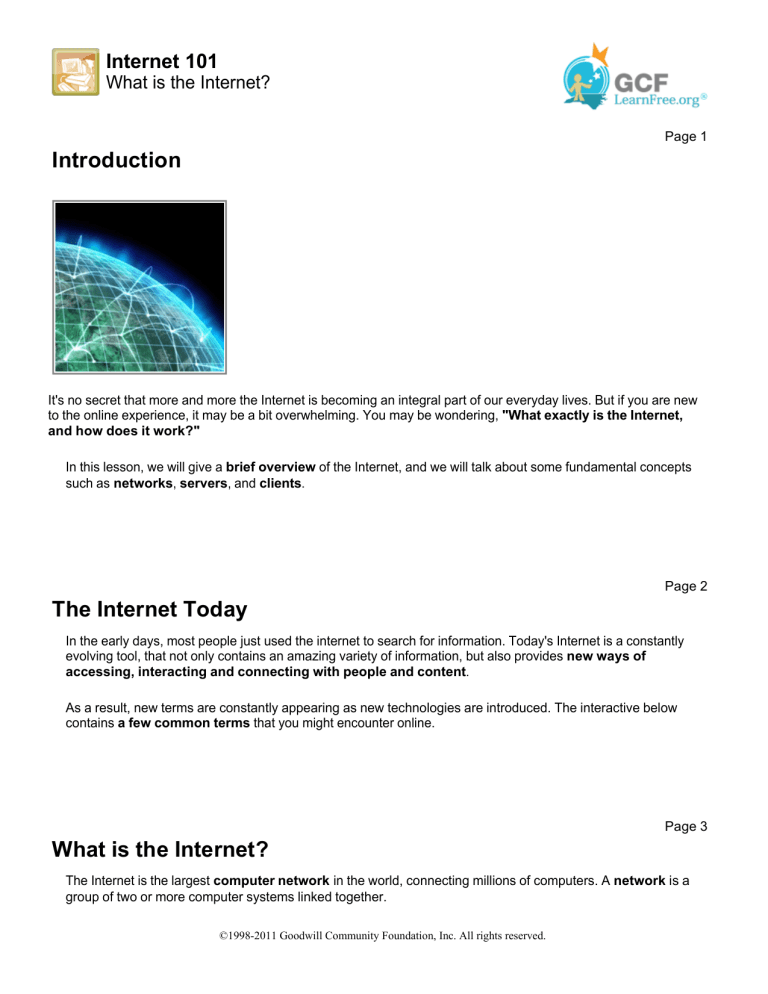Internet 101: What is the Internet?

Internet 101
What is the Internet?
Introduction
Page 1
It's no secret that more and more the Internet is becoming an integral part of our everyday lives. But if you are new to the online experience, it may be a bit overwhelming. You may be wondering, "What exactly is the Internet,
and how does it work?"
In this lesson, we will give a brief overview of the Internet, and we will talk about some fundamental concepts such as networks, servers, and clients.
Page 2
The Internet Today
In the early days, most people just used the internet to search for information. Today's Internet is a constantly evolving tool, that not only contains an amazing variety of information, but also provides new ways of
accessing, interacting and connecting with people and content.
As a result, new terms are constantly appearing as new technologies are introduced. The interactive below contains a few common terms that you might encounter online.
Page 3
What is the Internet?
The Internet is the largest computer network in the world, connecting millions of computers. A network is a group of two or more computer systems linked together.
©1998-2011 Goodwill Community Foundation, Inc. All rights reserved.
There are two main types of computer networks:
1. Local Area Network (LAN): A LAN is two or more connected computers sharing certain resources in a relatively small geographic location, often in the same building. Examples include home networks and office networks.
2. Wide Area Network (WAN): A WAN typically consists of two or more LANs. The computers are farther apart and are linked by telephone lines, dedicated telephone lines, or radio waves. The Internet is the largest Wide Area Network (WAN) in existence.
Servers and Clients
©1998-2011 Goodwill Community Foundation, Inc. All rights reserved.
Page 4
You may have heard someone say something like "The server is down" or "We're having problems with the e-mail server." A
server is a computer that "serves" many different computers in a network by running specialized software and storing
information. For example, web pages are stored on servers.
When you access a web page, your computer is acting as a
client. A client runs familiar software such as web browsers or
email software, and it communicates with the server to get the information it requires.
In order for your browser to display a web page, it requests the data from the server where the page is stored. The server processes the request, then sends the data to your browser, where it is displayed.
A server with multiple clients
In peer-to-peer (P2P) networks, each computer acts as both a server and a client. Examples of P2P software include Skype and BitTorrent .
Did you know?
The foundation of the Internet began in 1969, when the
US Department of Defense created ARPAnet, a project to allow military personnel to communicate with each other in an emergency.
By 2009, there were over 1.7 billion Internet users— over one quarter of the world's population.
Page 5
©1998-2011 Goodwill Community Foundation, Inc. All rights reserved.
©1998-2011 Goodwill Community Foundation, Inc. All rights reserved.











